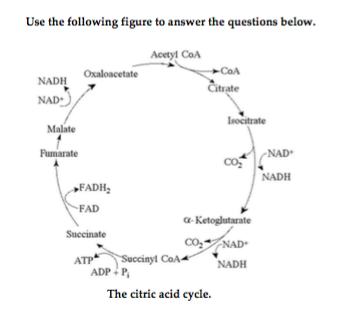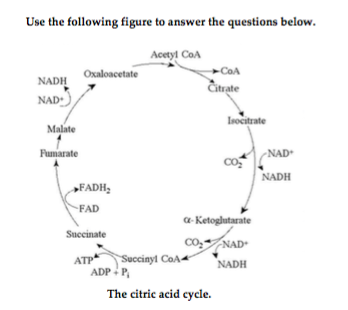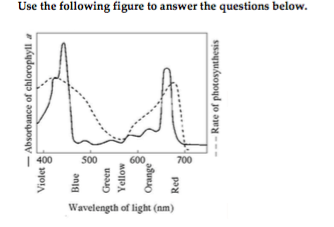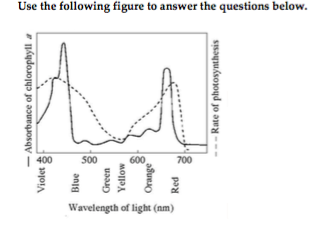Instructions for Side by Side Printing
- Print the notecards
- Fold each page in half along the solid vertical line
- Cut out the notecards by cutting along each horizontal dotted line
- Optional: Glue, tape or staple the ends of each notecard together
Lecture Exam 4
front 1 1) Substrate-level phosphorylation occurs _____.1) _______ | back 1 D |
front 2 2) The molecule that functions as the reducing agent (electron donor) in a redox or oxidation-reduction reaction _____. A) gains electrons and gains potential energy B) gains electrons and loses potential energy C) loses electrons and loses potential energy D) loses electrons and gains potential energy | back 2 C |
front 3 3) Which of the listed statements describes the results of the following reaction? C6H12O6 + 6 O2 → 6 CO2 + 6 H2O + Energy 3) _______ A) CO2 is reduced and O2 is oxidized. B) O2 is reduced and CO2 is
oxidized. | back 3 C |
front 4 4) High levels of citric acid inhibit the enzyme phosphofructokinase, a key enzyme in glycolysis. Citric acid binds to the enzyme at a different location from the active site. This is an example of _____. 4) _______ A) allosteric regulation D) positive feedback regulation | back 4 A |
front 5 5) Why is glycolysis considered to be one of the first metabolic
pathways to have evolved? | back 5 B |
front 6 6) Which of the following occurs in the cytosol of a eukaryotic cell? 6) _______ A) oxidation of pyruvate to acetyl CoA B) fermentation and
chemiosmosis | back 6 C |
front 7 7) Which of the following normally occurs regardless of whether or not oxygen (O2) is present? A) oxidative phosphorylation (chemiosmosis) B) citric acid cycle | back 7 D |
front 8 8) In liver cells, the inner mitochondrial membranes are about five times the area of the outer mitochondrial membranes. What purpose must this serve? 8) _______ A) It increases the surface for oxidative phosphorylation. B) It allows for an increased rate of glycolysis. 5) _______ C) It allows for an increased rate of the citric acid cycle. | back 8 A |
front 9 9) The synthesis of ATP by oxidative phosphorylation, using the energy released by movement of protons across the membrane down their electrochemical gradient, is an example of _____. 9) _______ A) a reaction with a positive ΔG | back 9 D |
front 10 10) When hydrogen ions are pumped from the mitochondrial matrix across the inner membrane and into the intermembrane space, the result is the _____. 10) ______ A) lowering of pH in the mitochondrial matrix B) reduction of NAD+ C) creation of a proton-motive force D) formation of ATP | back 10 C |
front 11 11) Energy released by the electron transport chain is used to pump H+ into which location in eukaryotic cells? 11) ______ A) mitochondrial inner membrane B) mitochondrial intermembrane space C) mitochondrial outer membrane D) mitochondrial matrix | back 11 B |
front 12 12) The primary role of oxygen in cellular respiration is to _____. 12) ______ A) combine with carbon, forming CO2 B) yield energy in the form of ATP as it is passed down the respiratory chain C) combine with lactate, forming pyruvate | back 12 D |
front 13 13) During aerobic respiration, which of the following directly donates electrons to the electron transport chain at the lowest energy level? 13) ______ A) ATP B) FADH2 C) ADP +P i D) NADH | back 13 B |
front 14 14) During aerobic respiration, electrons travel downhill in which sequence? A) glucose → pyruvate → ATP → oxygen D) food → glycolysis → citric acid cycle → NADH → ATP | back 14 C |
front 15 15) The electron transport chain _____. 15) ______ A) takes place in the cytoplasm of prokaryotic cells B) is a series of redox reactions D) is driven by ATP consumption | back 15 B |
front 16 16) Which one of the following is formed by the removal of a carbon (as CO2) from a molecule of pyruvate? 16) ______ A) acetyl CoA B) citrate C) oxaloacetate D) glyceraldehyde 3-phosphate | back 16 A |
front 17 In the presence of oxygen, the three-carbon compound pyruvate can be catabolized in the citric acid cycle. First, however, the pyruvate (1) loses a carbon, which is given off as a molecule of CO2, (2) is oxidized to form a two-carbon compound called acetate, and (3) is bonded to coenzyme A. 17) The three listed steps result in the formation of _____. 17) ______ A) acetyl CoA, NAD+, ATP, and CO2 B) acetyl CoA, FADH2, and CO2 C) acetyl CoA, NADH, and CO2 D) acetyl CoA, O2, and ATP | back 17 C |
front 18  18) For each mole of glucose (C6H12O6) oxidized by cellular respiration, how many moles of CO2 are released in the citric acid cycle (see the accompanying figure)? 18) ______ A) 2 B) 4 C) 32 D) 6 | back 18 B |
front 19  19) Which electron carrier(s) function in the citric acid cycle? 19) ______ A) ADP and ATP B) NADH and FADH2 C) NAD+ only D) the electron transport chain | back 19 B |
front 20 20) Which kind of metabolic poison would most directly interfere with glycolysis? A) an agent that reacts with NADH and oxidizes it to NAD+ B) an agent that reacts with oxygen and depletes its concentration in the cell C) an agent that closely mimics the structure of glucose but is not metabolized D) an agent that binds to pyruvate and inactivates it | back 20 C |
front 21 21) Starting with one molecule of glucose, the energy-containing products of glycolysis are _____.21) ______ A) 2 NADH, 2 pyruvate, and 2 ATP B) 2 NAD+, 2 pyruvate, and 2 ATP D) 6 CO2, 2 pyruvate, and 2 ATP | back 21 A |
front 22 22) The free energy for the oxidation of glucose to CO2 and water is -686 kcal/mol and the free energy for the reduction of NAD+ to NADH is +53 kcal/mol. Why are only two molecules of NADH formed during glycolysis when it appears that as many as a dozen could be formed? 22) ______ A) Most of the free energy available from the oxidation of glucose
is used in the production of ATP in glycolysis. . C) There is no CO2 or water produced as products of
glycolysis. | back 22 B |
front 23 23) The oxygen consumed during cellular respiration is involved directly in which process or event? A) accepting electrons at the end of the electron transport
chain D) glycolysis | back 23 A |
front 24 24) Plants photosynthesize _____. A) only in the light but respire in light and dark D) only in the light but respire only in the dark | back 24 A |
front 25 25) Early investigators thought the oxygen produced by photosynthetic plants came from carbon dioxide. In fact, it comes from _____. A) water C) glucose B) electrons from NADPH D) air | back 25 A |
front 26  26) The figure shows the absorption spectrum for chlorophyll a and the action spectrum for photosynthesis. Why are they different? 26) ______ A) Oxygen given off during photosynthesis interferes with the
absorption of light. D) Other pigments absorb light in addition to chlorophyll a. | back 26 D |
front 27  27) What wavelength of light in the figure is most effective in driving photosynthesis? 27) ______ A) 730 mm B) 575 mm C) 420 mm D) 625 mm | back 27 C |
front 28 Theodor W. Engelmann illuminated a filament of algae with light that passed through a prism, thus exposing different segments of algae to different wavelengths of light. He added aerobic bacteria and then noted in which areas the bacteria congregated. He noted that the largest groups were found in the areas illuminated by the red and blue light. 28) What did Engelmann conclude about the congregation of bacteria in the red and blue areas? 28) ______ A) Bacteria are attracted to red and blue light and thus these
wavelengths are more reactive than other wavelengths. B) Bacteria
congregated in these areas because these areas had the most oxygen
being released. | back 28 B |
front 29 29) An outcome of Engelmann's experiment was to help determine the relationship between _____. A) wavelengths of light and the amount of heat released D) wavelengths of light and the rate of aerobic respiration | back 29 C |
front 30 A spaceship is designed to support animal life for a multiyear voyage to the outer planets of the solar system. Plants will be grown to provide oxygen and to recycle carbon dioxide. Since the spaceship will be too far from the sun for photosynthesis, an artificial light source will be needed. 30) What wavelengths of light should be used to maximize plant growth with a minimum of energy expenditure? 30) ______ A) full-spectrum white light B) green light | back 30 D |
front 31 31) Why are there several structurally different pigments in the reaction centers of photosystems? 31) ______ A) Excited electrons must pass through several pigments before they
can be transferred to electron acceptors of the electron transport
chain. | back 31 C |
front 32 32) In autumn, the leaves of deciduous trees change colors. This is because chlorophyll is degraded and _____. 32) ______ A) carotenoids and other pigments are still present in the leaves B) sugars are sent to most of the cells of the leaves | back 32 A |
front 33 33) As electrons are passed through the system of electron carriers associated with photosystem II, they lose energy. What happens to this energy? 33) ______ A) It excites electrons of the reaction center of photosystem
I. C) It is used to establish and maintain a proton gradient. D) It is lost as heat. | back 33 C |
front 34 34) The final electron acceptor associated with photosystem I is _____. A) NADP B) oxygen C) water D) NADPH | back 34 A |
front 35 35) The electrons of photosystem II are excited and transferred to electron carriers. From which molecule or structure do the photosystem II replacement electrons come? 35) ______ A) water B) oxygen | back 35 A |
front 36 36) Some photosynthetic organisms contain chloroplasts that lack photosystem II, yet are able to survive. The best way to detect the lack of photosystem II in these organisms would be to _____. 36) ______ A) test for liberation of O2 in the light B) test for CO2 fixation in the dark C) determine if they have thylakoids in the chloroplasts D) do experiments to generate an action spectrum | back 36 A |
front 37 37) What are the products of linear electron flow? A) ADP and NADP+ B) ATP and NADPH | back 37 B |
front 38 38) Assume a thylakoid is somehow punctured so that the interior of the thylakoid is no longer separated from the stroma. This damage will most directly affect the _____. A) reduction of NADP+ | back 38 B |
front 39 39) In a plant cell, where are the ATP synthase complexes located? A) inner mitochondrial membrane only D) thylakoid membrane and plasma membrane | back 39 B |
front 40 40) In mitochondria, chemiosmosis moves protons from the matrix into the intermembrane space, whereas in chloroplasts, chemiosmosis moves protons from the _____. A) intermembrane space to the matrix B) matrix to the stroma C) thylakoid space to the stromaD) stroma to the thylakoid space | back 40 D |
front 41 41) Which of the following statements best describes the relationship between photosynthesis and respiration? 41) ______ A) Photosynthesis stores energy in complex organic molecules;
respiration releases energy from complex organic molecules D) Photosynthesis is catabolic; respiration is anabolic. | back 41 A |
front 42 42) What is the relationship between the wavelength of light and the quantity of energy per photon? A) They are logarithmically related. B) They are separate
phenomena. | back 42 C |
front 43 43) In a plant, the reactions that produce molecular oxygen (O2) take place in _____. A) the light reactions and the Calvin cycle C) the light reactions alone | back 43 C |
front 44 44) A flask containing photosynthetic green algae and a control flask containing water with no algae are both placed under a bank of lights, which are set to cycle between 12 hours of light and 12 hours of dark. The dissolved oxygen concentrations in both flasks are monitored. Predict what the relative dissolved oxygen concentrations will be in the flask with algae compared to the control flask. The dissolved oxygen in the flask with algae will _____. 44) ______ A) always be lower C) be higher in the light, but lower in the dark D) always be higher | back 44 C |
front 45 45) Where does the Calvin cycle take place? 45) ______ A) stroma of the chloroplast B) outer membrane of the chloroplast C) interior of the thylakoid (thylakoid space) D) thylakoid membrane | back 45 A |
front 46 46) What is the primary function of the Calvin cycle? 46) ______ A) split water and release oxygen D) synthesize simple sugars from carbon dioxide | back 46 D |
front 47 47) Which of the following sequences correctly represents the flow of electrons during photosynthesis? A) NADPH → chlorophyll → Calvin cycle B) NADPH → electron transport chain → O2 D) NADPH → O2 → C O2 | back 47 C |
front 48 48) Which of the following does NOT occur during the Calvin cycle? 48) ______ A) release of oxygen B) regeneration of the CO2 acceptor C) consumption of ATP D) oxidation of NADPH | back 48 A |
front 49 49) When electrons flow along the electron transport chains of mitochondria, which of the following changes occurs? 49) ______ A) The pH of the matrix increases. C) NAD+ is oxidized. | back 49 A |
front 50 Theodor W. Engelmann illuminated a filament of algae with light that passed through a prism, thus exposing different segments of algae to different wavelengths of light. He added aerobic bacteria and then noted in which areas the bacteria congregated. He noted that the largest groups were found in the areas illuminated by the red and blue light. 50) In Engelmann experiment, if you ran the same experiment without passing light through a prism, what would you predict?50) ______ A) The bacteria would be relatively evenly distributed along the
algal filaments. | back 50 A |